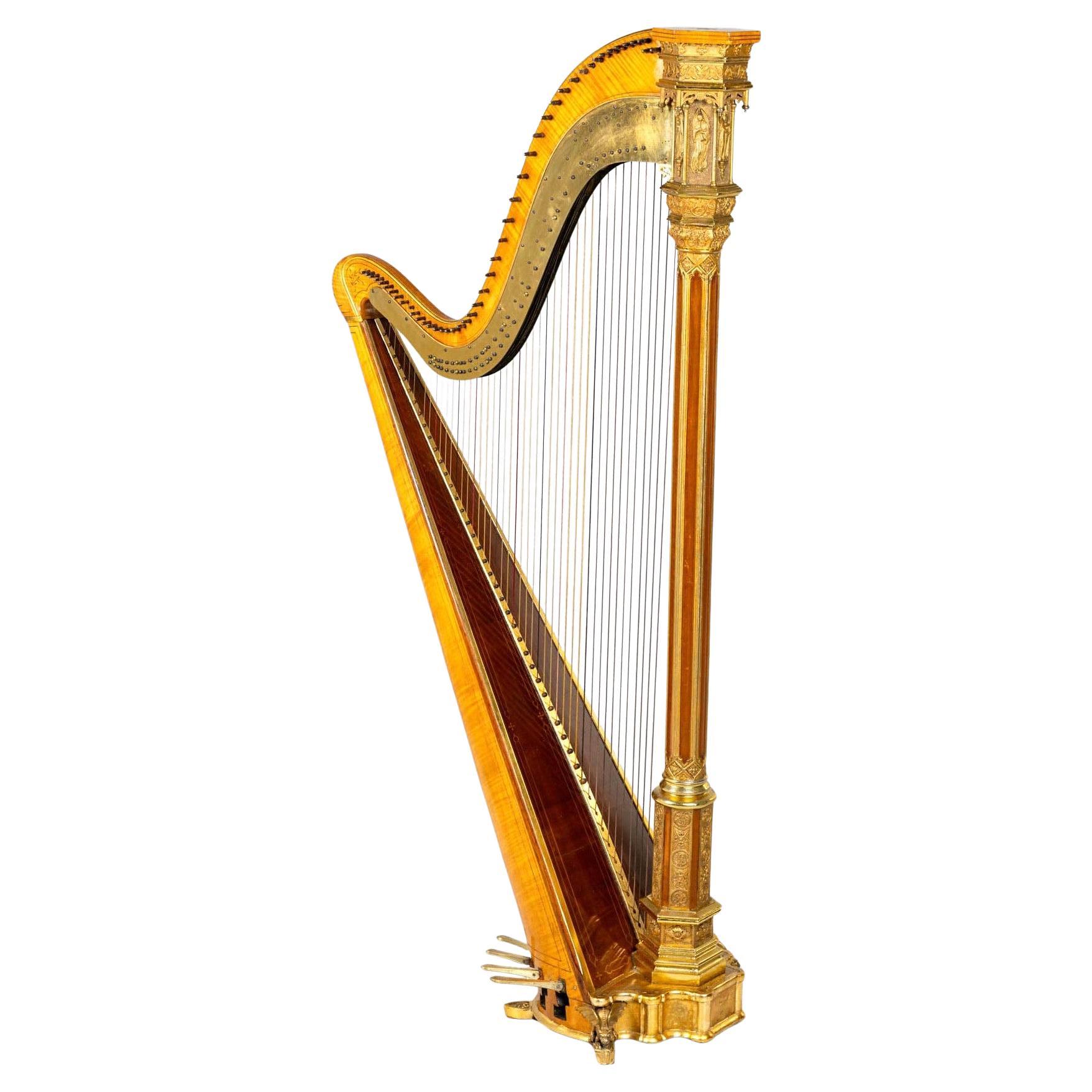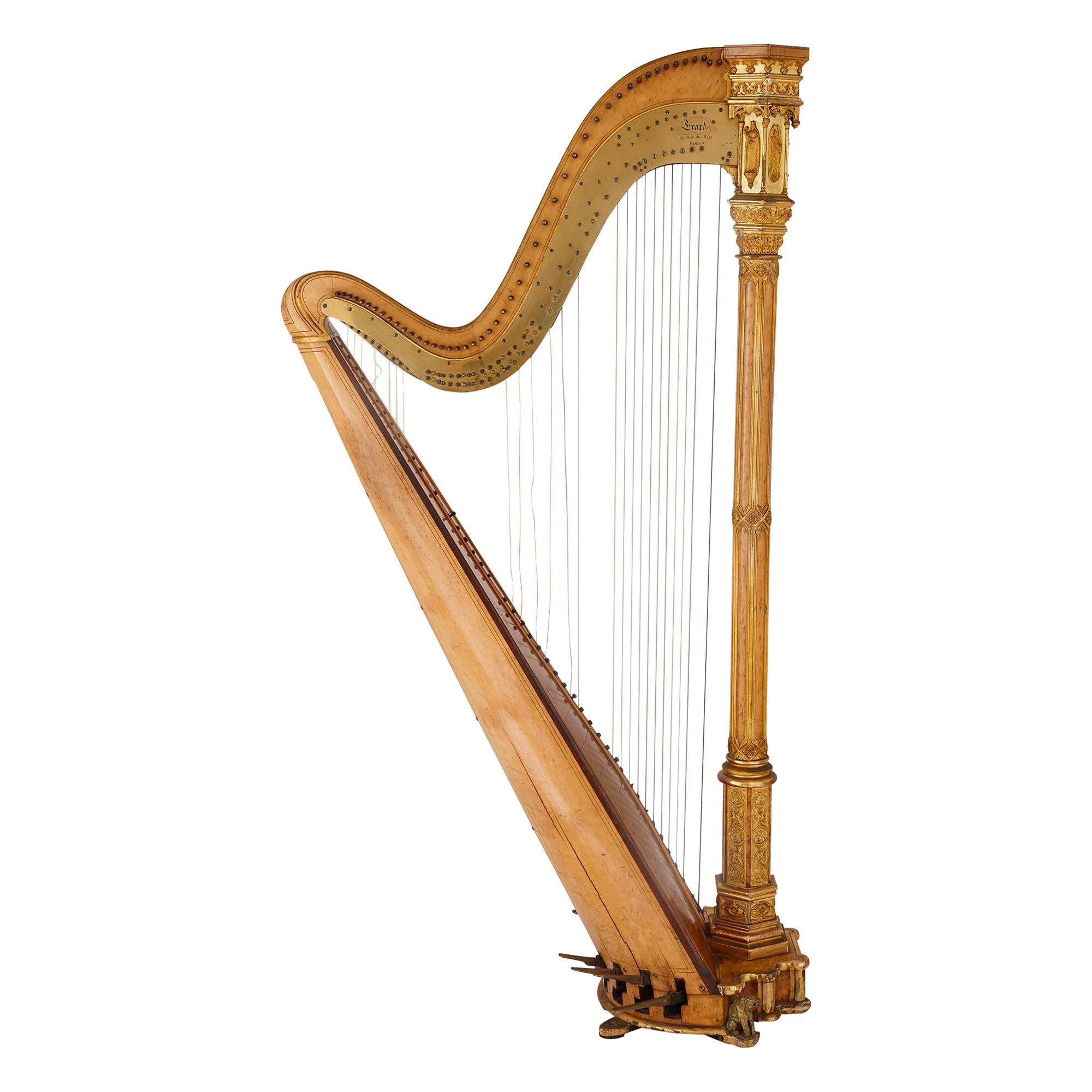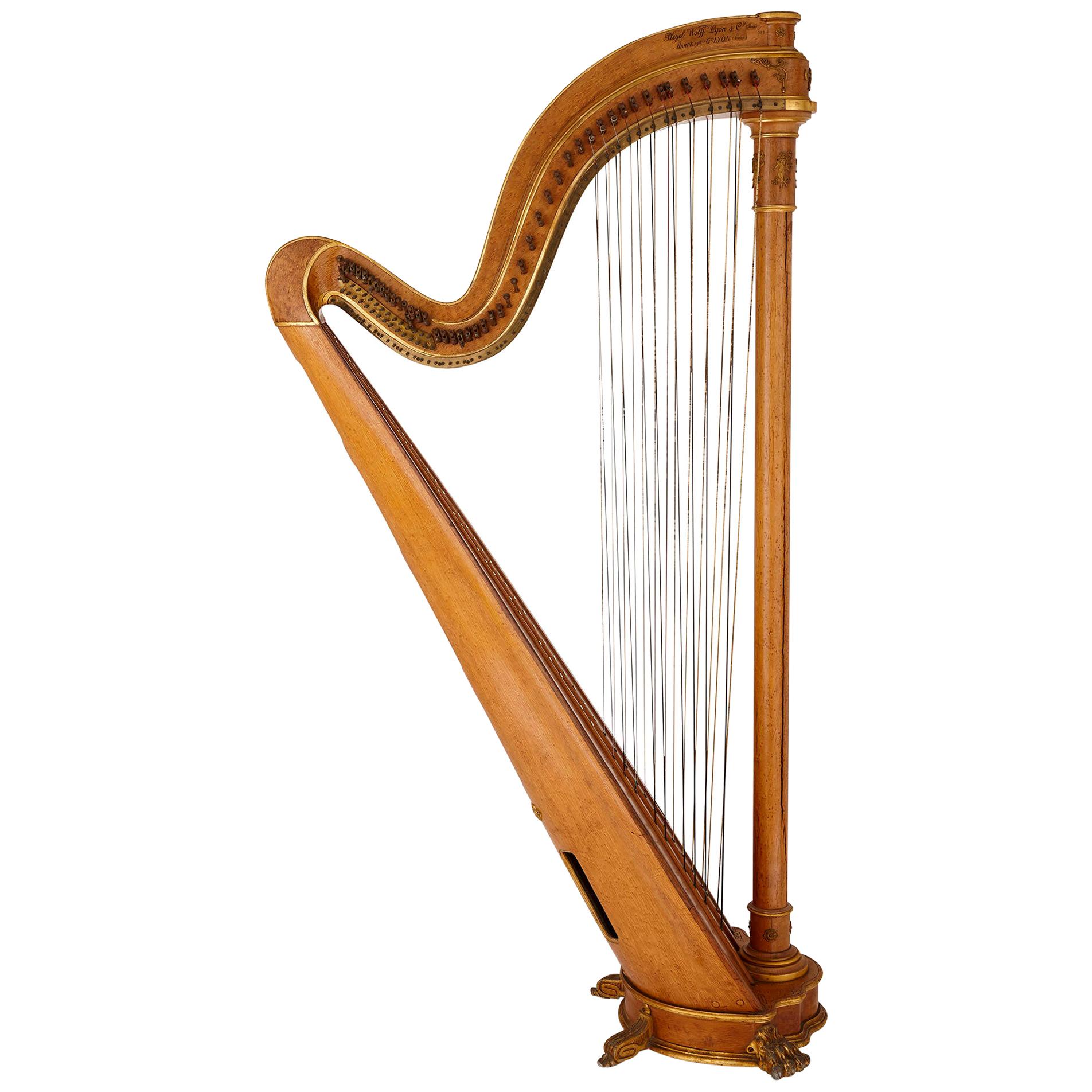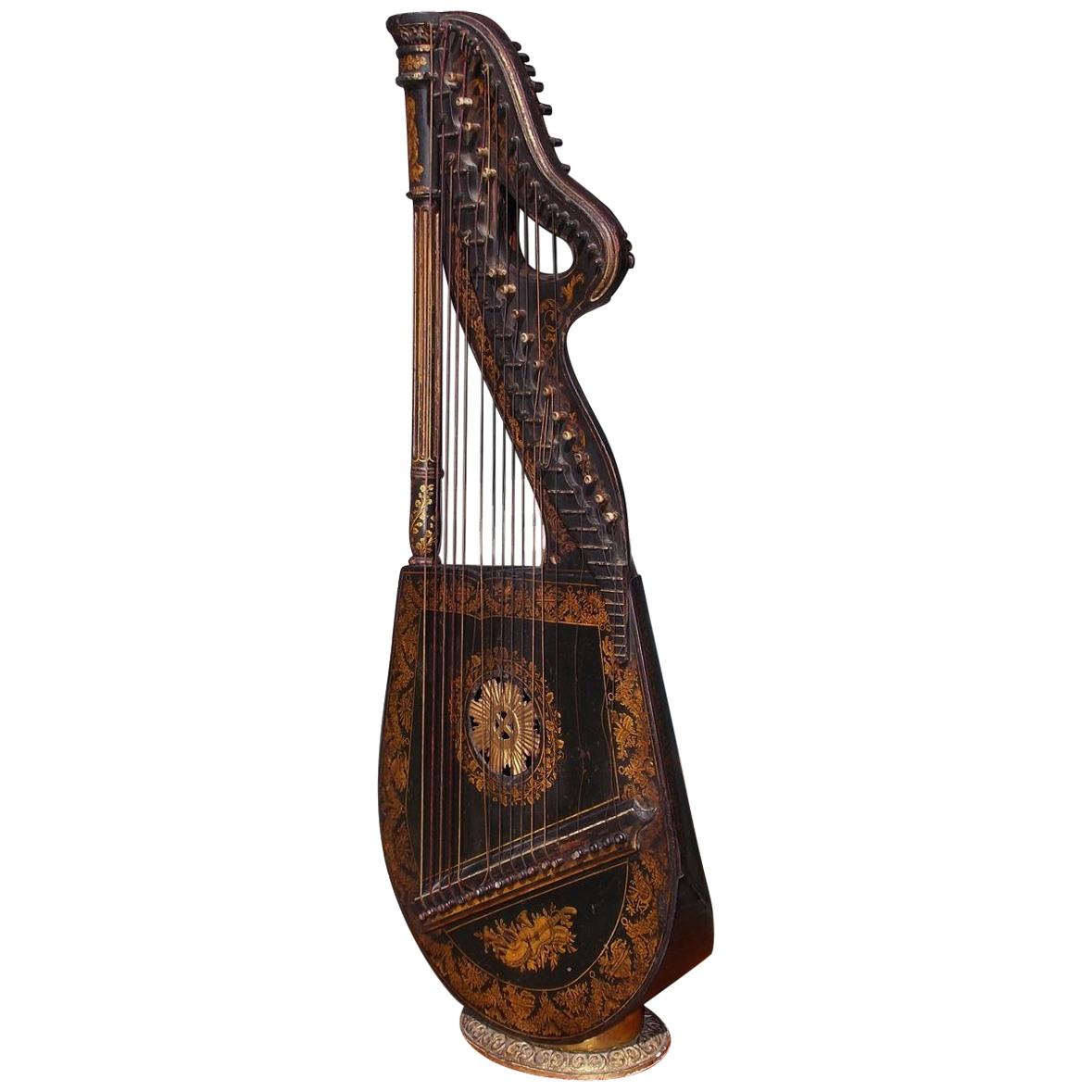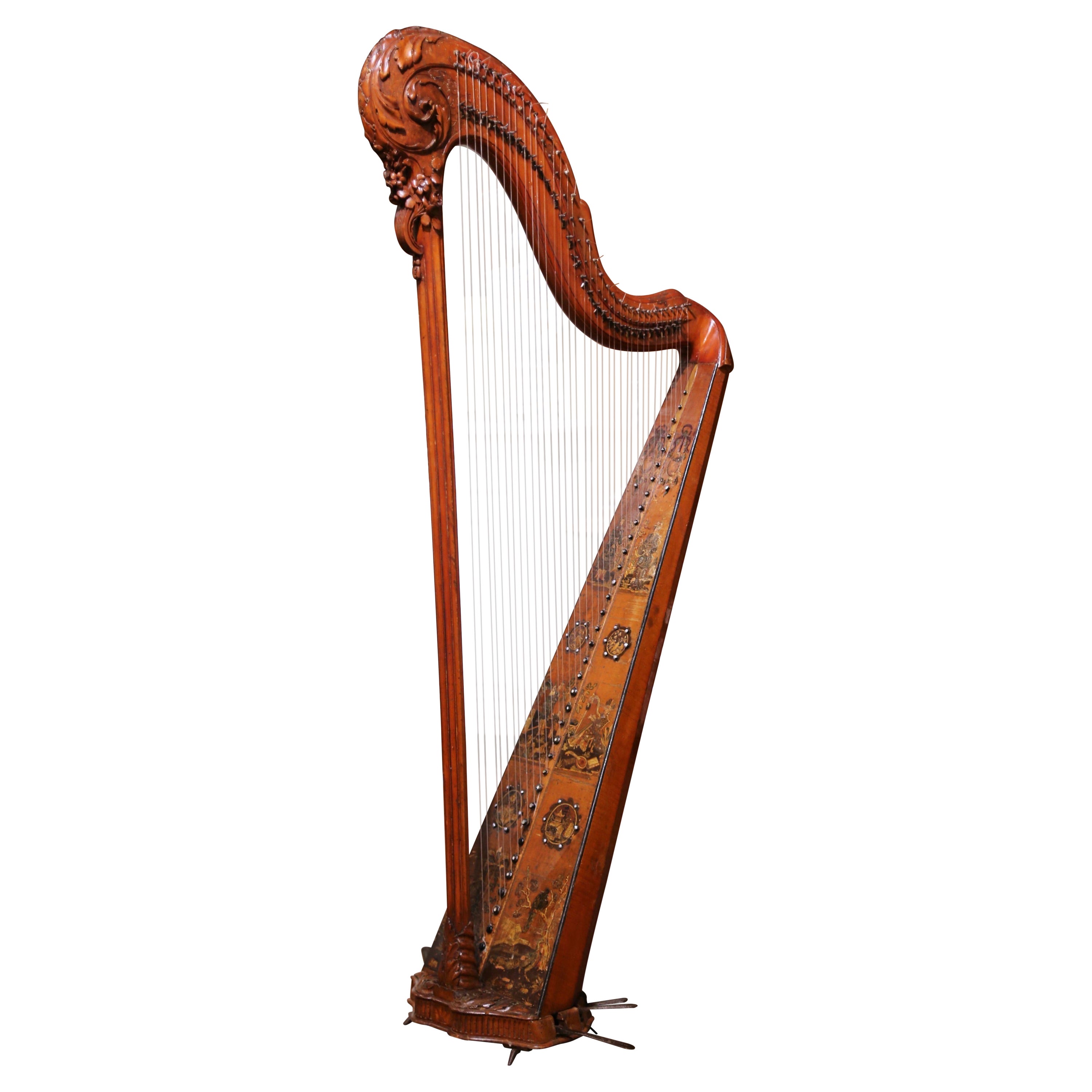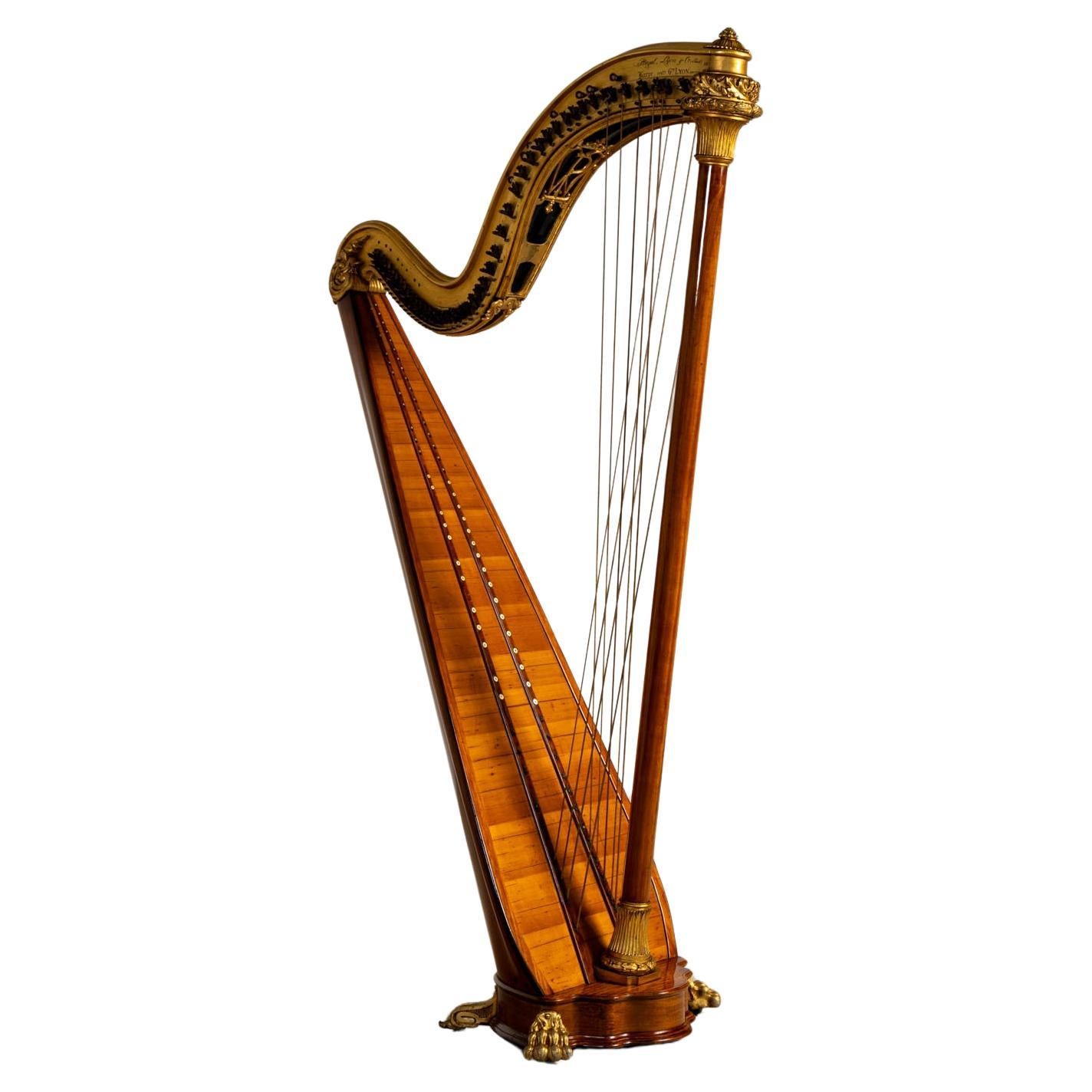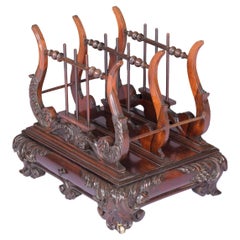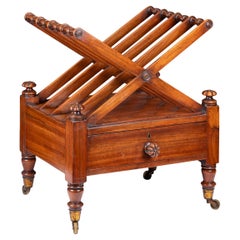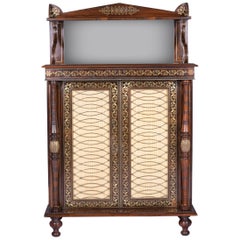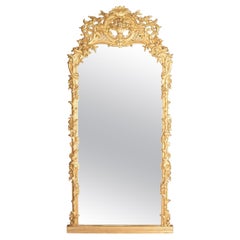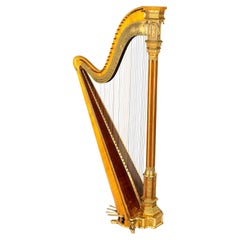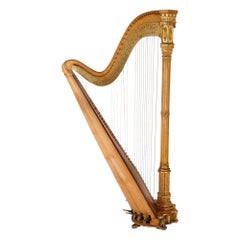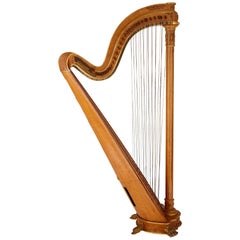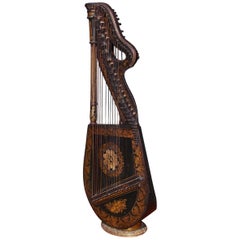Items Similar to Early 19th Century Parcel Gilt Gothic Revival Harp By Sebastian Erard
Video Loading
Want more images or videos?
Request additional images or videos from the seller
1 of 9
Early 19th Century Parcel Gilt Gothic Revival Harp By Sebastian Erard
$15,196.34
£11,252.80
€12,750
CA$20,897.25
A$23,243.11
CHF 12,164.95
MX$283,489.30
NOK 152,856.98
SEK 143,781.72
DKK 97,069.68
About the Item
A very fine and elegant Regency Satinwood and parcel-gilt double action Harp from the workshop of the famous harp and piano maker Sebastian Erard (1752-1831), decorated in the Grecian revival manner, inscribed 'Sebastian Erard's/Patent 6599/18 Great Marlborough Street, London/Maker By Special Appointment to His Majesty & the ROYAL FAMILY', with seven pedals.
Circa 1820
English
Biography:
The Erard instrument-making dynasty spanned more than 150 years, producing pianos that would become synonymous with technical excellence and beauty. Born in Strasbourg, Alsace, in 1752, founder Sébastien Erard left home at 16 to work as a harpsichord apprentice in Paris, France. His innovative techniques and impressive skill were almost immediately apparent, and he caught the attention of the powerful Duchesse de Villeroi. Erard formed an independent workshop with her support in 1777 and built his first pianoforte. The Erard name became famous among the French nobility and in artists’ circles after the instrument was heard in the Villeroi salon.
As a young man, Erard made French queen Marie Antoinette one of his new creations— a hybrid instrument with two keyboards, one for the harpsichord and one for the organ. He reportedly made it specifically to suit her vocal abilities, changing the keyboard position and strings to accommodate a lower range.
Erard fled at the onset of the French Revolution, setting up a workshop in London and attaining similar popularity in the years he resided there. Leaving his London workshop in the capable hands of his nephew, Pierre, Sébastien returned to Paris, where he continued to reimagine and improve his instruments.
At the beginning of the nineteenth century, the popular large orchestra necessitated that the loud and full tones of Romantic composers could be heard in concert halls. As well as patenting other improvements on the piano, Sébastien Erard invented the double-escapement action, an updated mechanism by which the keys activate hammers and strike the strings. This milestone in piano development finally offered pianists a combination of speed and repetition with expressive subtlety; this feature remains standard on pianos today.
In 1839, England’s Queen Victoria appointed Pierre Erard “Pianoforte Maker to Her Majesty.” Prince Albert, Queen Victoria’s beloved husband, also favored Erard pianos and commissioned a horizontal grand piano in the Renaissance style. The Erard family’s association with members of the French and British royal families, as well as aristocracy from both countries, created a fashionable mystique backed by substance.
- Creator:Sébastien Érard (Maker)
- Dimensions:Height: 66.93 in (170 cm)Width: 31.5 in (80 cm)Depth: 20.08 in (51 cm)
- Style:Gothic Revival (In the Style Of)
- Materials and Techniques:
- Place of Origin:
- Period:
- Date of Manufacture:1820
- Condition:Wear consistent with age and use.
- Seller Location:Dublin, IE
- Reference Number:1stDibs: LU5735239165362
About the Seller
5.0
Vetted Professional Seller
Every seller passes strict standards for authenticity and reliability
Established in 2006
1stDibs seller since 2021
9 sales on 1stDibs
Typical response time: 5 hours
- ShippingRetrieving quote...Shipping from: Dublin, Ireland
- Return Policy
Authenticity Guarantee
In the unlikely event there’s an issue with an item’s authenticity, contact us within 1 year for a full refund. DetailsMoney-Back Guarantee
If your item is not as described, is damaged in transit, or does not arrive, contact us within 7 days for a full refund. Details24-Hour Cancellation
You have a 24-hour grace period in which to reconsider your purchase, with no questions asked.Vetted Professional Sellers
Our world-class sellers must adhere to strict standards for service and quality, maintaining the integrity of our listings.Price-Match Guarantee
If you find that a seller listed the same item for a lower price elsewhere, we’ll match it.Trusted Global Delivery
Our best-in-class carrier network provides specialized shipping options worldwide, including custom delivery.More From This Seller
View All19th Century Regency Canterbury By Gillows Of Lancaster
By Gillows of Lancaster & London
Located in Dublin, IE
A very fine and attractive late Regency early William IV Canterbury firmly attributed to Gillows Of London & Lancaster, with three separate partitions above a single drawer to the fr...
Category
Antique 19th Century English Regency Magazine Racks and Stands
Materials
Wood
Early 19th Century English Regency Canterbury Attributed To Gillows, Lancaster
By Gillows of Lancaster & London
Located in Dublin, IE
A stunning early 19th century canterbury by Gillows of Lancaster, with three tall flat X form slots, above a frieze drawer stamped ( GILLOWS.LANCASTER ). The case with four turned f...
Category
Antique Early 19th Century English Regency Magazine Racks and Stands
Materials
Wood
19th Century Regency Chiffonier Side Cabinet in the Manner of George Bullock
By George Bullock
Located in Dublin, IE
A Regency brass inlaid chiffonier inlaid with scrolling foliage and rosettes, the triangular pediment and conforming galleried shelf above a mirror inset panel, on S-scroll supports,...
Category
Antique Early 19th Century English Regency Cabinets
Materials
Brass
19th Century Antique English Full Length Gilt Mirror
Located in Dublin, IE
A very fine large and attractive gilt mirror of arched rectangular form within an elaborate leaf and scroll work surround, surmounted with scrollwork and central shell raised on a pl...
Category
Antique 19th Century English Victorian Floor Mirrors and Full-Length Mir...
Materials
Gesso
Late 19th Century English Secretaire Bookcase by Edwards & Roberts
By Edwards & Roberts
Located in Dublin, IE
An exceptional late 19th century secretaire bookcase by Edwards & Roberts, the upper section with a pierced fretwork swan neck pediment with Greek key moulding. The twin astragal glazed doors open to reveal an adjustable shelved interior, having reeded canted corners. Constructed using the finest figured mahogany with satinwood and boxwood line inlaid detail. The lower section having figured mahogany top, banded in satinwood above a secretaire drawer depicting a central classical urn within a floral swags, enclosing six Satinwood drawers, six pigeon holes and a gilt tooled leather inset writing surface. The twin panelled doors again constructed from figured mahogany with boxwood, satinwood inlaid panels depicting classical urns within a floral border. Also having reeded canted corners and enclosing an adjustable shelve interior, resting on solid mahogany bracket feet.
Circa 1900
English
Artists Biography:
Edwards & Roberts was founded in 1845, and had premises at 21 Wardour Street London. By 1892 they occupied more than a dozen buildings in Wardour Street, where they continued to trade until the end of the century. They became one of the leading London cabinet makers and retailers working in a variety of styles, both modern and revivalist. Their business also involved retailing, adapting and restoring the finest antique furniture and there are many examples of their earlier furniture with later embellishments bearing their stamp. Edwards & Roberts specialized in marquetry, inlay and ormolu. Edwards & Roberts was one of the principal London companies working in the taste of the late 18th century. They started business in 1845 and by 1854 were trading as "Edwards & Roberts, 21 Wardour Street, Antique and Modern Cabinet Makers and Importers of Ancient Furniture". Wardour Street became an important furniture retailing area in the second half of the 19th century. The firm carried a fine and complete library...
Category
Antique Late 19th Century English Edwardian Bookcases
Materials
Mahogany
19th Century French Louis XVI Style Ormolu Mounted & Parquetry Side Cabinet
Located in Dublin, IE
A stunning 19th century Louis XVI style side cabinet, the cabinet is surmounted by a white rectangular marble top with canted corners below an ormolu mounted frieze, The centre to th...
Category
Antique 19th Century French Louis XVI Cabinets
Materials
Carrara Marble, Ormolu
You May Also Like
Late 19th Century Harp by Sebastian Erard, Musical Instrument from 1897
By Sébastien Érard
Located in Greven, DE
Antique Erard double pedal harp
London
Wood, brass, stucco
manufactured in 1897
Dimensions: H x W x D: 178 x 92 x 48 cm
Description:
Antique harp in neo-Gothic style from the Seba...
Category
Antique Late 19th Century British Gothic Revival Musical Instruments
Materials
Brass
Antique Gothic Revival Harp by Erard
Located in London, GB
Antique Gothic Revival harp by Erard
French, c. 1880
Height 178cm, width 54cm, depth 91cm
Of typical form by the famed instrument maker Érard. ...
Category
Antique 19th Century French Gothic Revival Musical Instruments
Materials
Brass
$16,529 Sale Price
20% Off
Large Gilt Bronze Mounted Maple Harp by Pleyel, Wolff, Lyon and Cie
By Pleyel
Located in London, GB
This fine antique harp dates from the second half of the 19th century and was made in France by Pleyel, Wolff, Lyon and Cie. The renowned Parisian firm ma...
Category
Antique Late 19th Century French Musical Instruments
Materials
Ormolu, Bronze
English Regency Gilt Figural and Ebonized Dital Harp, Maker E. Light, Circa 1815
Located in Charleston, SC
English Regency gilt stenciled figural and floral ebonized dital harp signed by maker Edward Light. Retailed at Srohl Foley place London, Early 19th century.
Category
Antique 1810s English Regency Musical Instruments
Materials
String, Wood, Ebony, Giltwood
18th Century French Maple Decorative Harp with Hand Painted Chinoiserie Motifs
Located in Dallas, TX
Decorate a living room with this elegant antique pedal harp. Crafted in France circa 1780, the single action musical instrument features 36 recently repl...
Category
Antique Late 18th Century French Louis XV Musical Instruments
Materials
Maple
Chromatic Double Harp, Pleyel, Lyon & Cie, Paris, circa 1900
Located in Greding, DE
Large double harp with gold-patinated head and neck and carved paw feet on the base. The harp is marked on the neck "Pleyel, Lyion & Cie (Paris). Harp, sysle. Gve Lyon. Brevete. No. ...
Category
Antique Early 1900s French Musical Instruments
Materials
Mahogany
